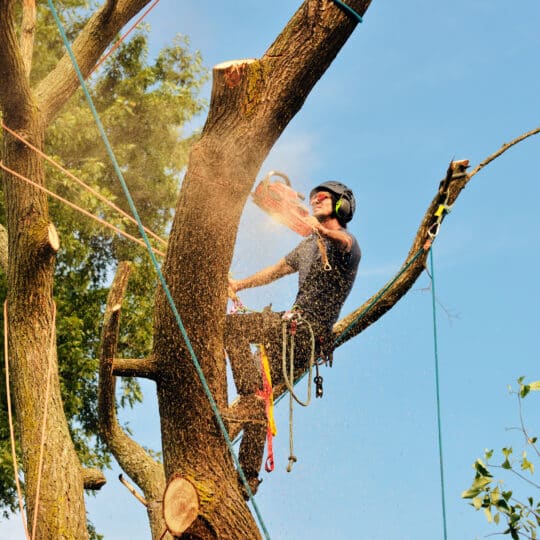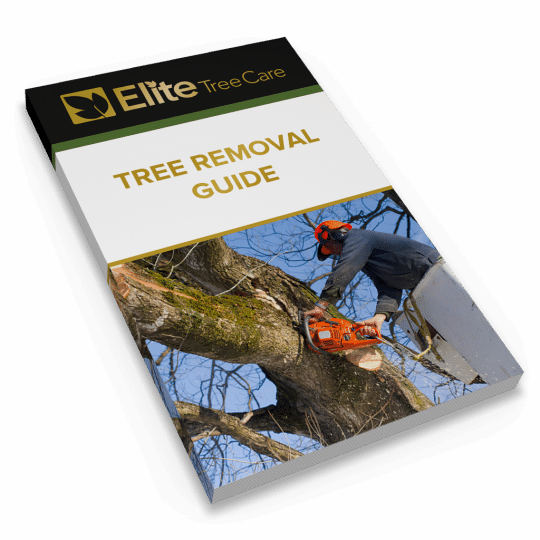What to do Before and After Tree Removal
How Planning & Professionals Make the Process Easier
Posted
August 22, 2024

If there’s a tree in your yard you think needs to go, there are things you should consider before and after tree removal. Here’s a list to help determine if the tree should really come down or if there are other alternatives.
What to do Before Tree Removal
Removing a tree is not an easy or inexpensive task. These are a few reasons why you should think long and hard about removing it. Here are some factors to consider:
- Condition. If the tree poses a safety risk, has been diagnosed with an untreatable disease, or has been deemed dead after an arborist’s evaluation, it should be professionally removed. However, if only parts of it are dead and it can be treated, that may be a better option.
- Environment. If the tree is in the way of construction or too close to buildings, think about how it can be pruned, incorporated in the design, or built around. Remember that a tree provides a number of benefits to the ecosystem, such as wildlife habitats and soil stability, so simply chopping it in the name of new construction is not always best.
- Regulations. Some areas require permits for tree removal, especially for large or protected species. Check with your local municipality or HOA community to confirm you’re in compliance with any guidelines.
- Expert. Once it’s clear the tree should come down for safety reasons, you should discuss the tree removal process with a certified arborist. Ask for proof of insurance to protect against any potential damages.
- Access. On the day of removal, remove any vehicles, outdoor furniture, or other obstacles from the vicinity. Notify your neighbors, especially if the tree is near their property lines.
The professional tree company may also have additional directions to help prepare for tree removal, including making sure large vehicles and crews can access the site.
Post Tree Removal Tips
Once the tree is removed, the job isn’t necessarily complete. Here are some post-tree removal projects to keep in mind.
- Logs and debris. Most tree removal companies include hauling away branches and debris in the cost of the job. However, if you want to keep the logs for firewood or other purposes, make sure the crew knows what to leave behind. There’s usually an additional cost for chopping firewood or mulching wood chips.
- Damage. Take a look around your yard for any signs of damage from falling branches, logs, or carrying these large limbs away.
- Stumps. Stump removal is an extra process that’s not typically included in a tree removal quote, unless you specifically ask for it. If you know you want the stump removed, make sure the tree company is aware so they can bring the necessary equipment. You can also repurpose the stump to save cost and keep a natural element in your yard.
- Roots. Even if the stump is removed, the roots may remain. Don’t be surprised if you see the tree trying to regrow throughout your yard. This is a sign it’s growing from its roots. There are root removal treatments available to help prevent regrowth.
- Holes. If the stump is removed, you’ll want to cover the open space with soil and mulch if it’s in the garden, or spread grass seed if it’s in the yard. Raise the level of soil since there’s the chance it will settle into the hole.
- Lawn. Between large machinery in your yard and dragging heavy pieces away, your grass may need some repair and reseeding.
- Replacement. Consider planting a suitable tree species in the proper place where it can thrive.
The tree removal process is more likely to run smoothly when a professional is in charge. Keep this in mind when considering whether you should remove a tree on your own. Then call Elite Tree Care for an evaluation of the tree in question. We can provide a quote and keep you informed of the process before and after the tree comes down.

Download Your FREE Tree Removal Guide
Even dedicated DIYers should think twice before taking on the task of tree removal. Our guide will help you decide whether to hire a tree service and how to get the most value for your money.